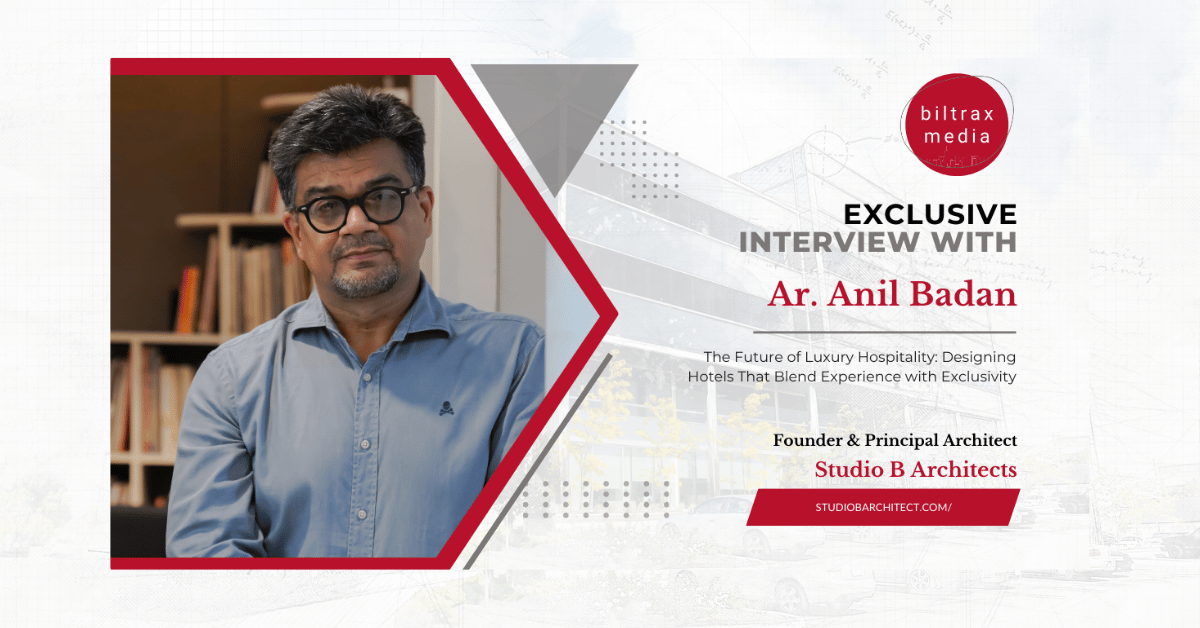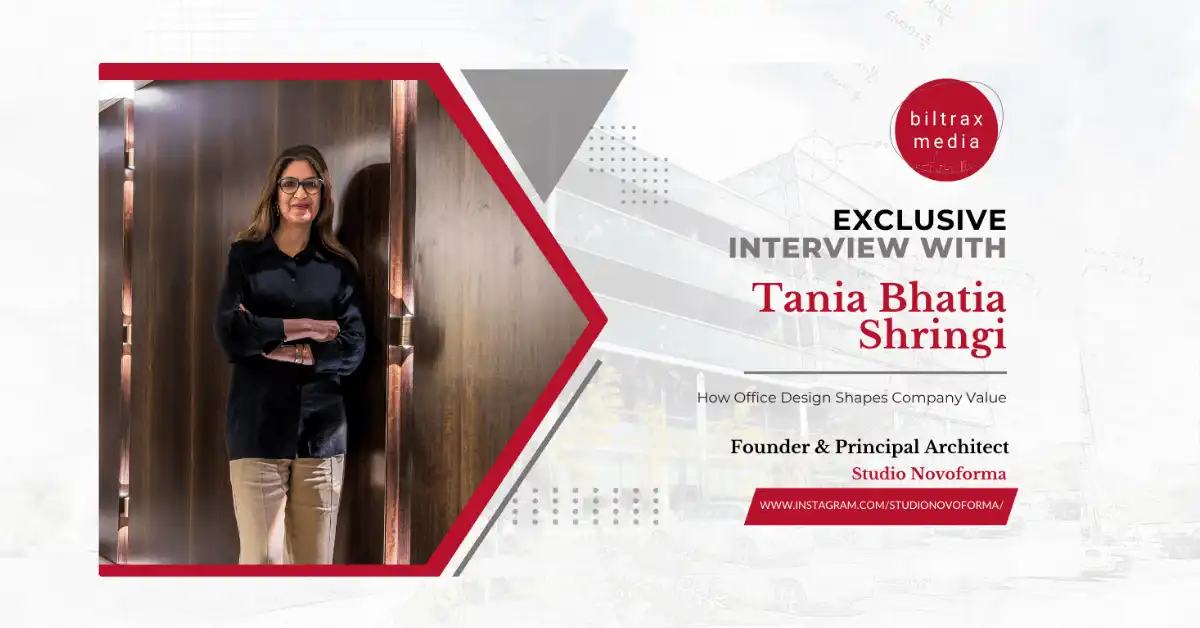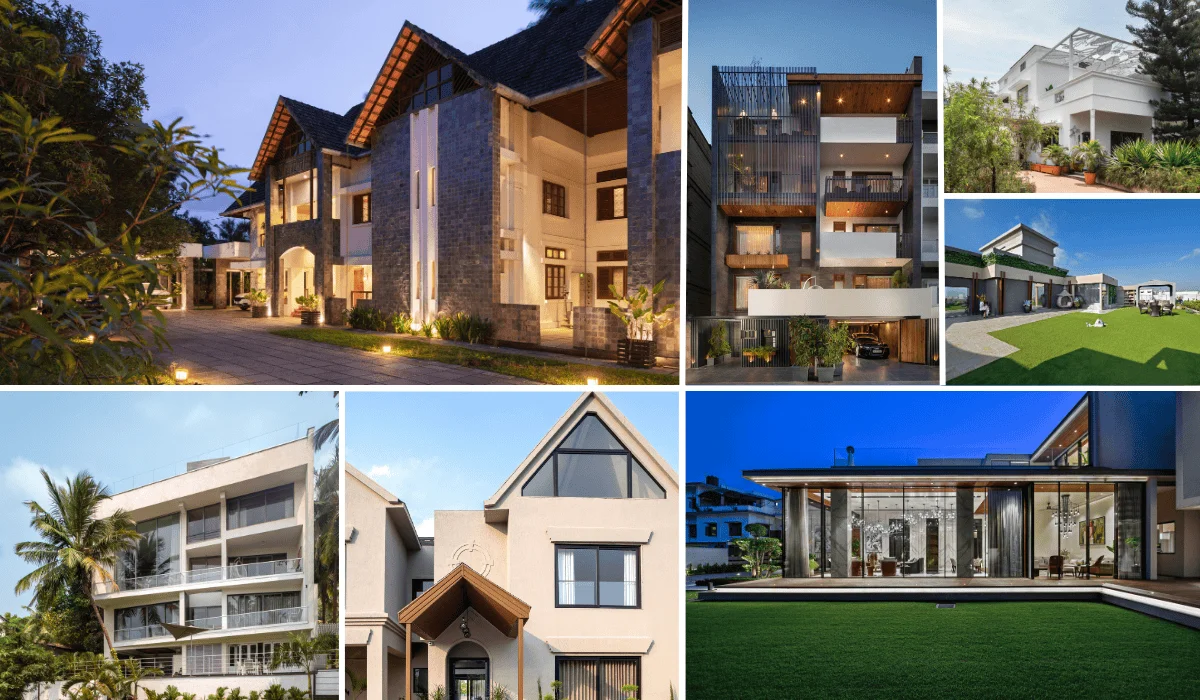Studio Mohenjodaro shares their thoughts on building comfort, sense of belonging, and spatial practicality. “Spatial quality should not isolate the soul, rather it should comfort and nurture it, providing a sense of belonging and ownership to its occupant.” expresses Ar. Tarunpreet Singh Bhatia, the spearhead of Studio Mohenjodaro, embarked on each project at the core, keeping the design functional and practical. Established in 2014, this Chandigarh-based firm deals with a variety of projects, ironing out the complex layers of the built form and providing comfort and ownership to its occupants. Tarunpreet Bhatia discusses the nuts and bolts of his practice and the shift in architecture to look forward to.
The primary objective of each project for Studio Mohenjodaro is to get the basics right – light,ventilation and hierarchy of spaces instead of a dynamic sculptural facade. Tarunpreet Singh voices, “We won’t develop multiple floor levels to make it interesting or playful, the design needs to serve a purpose. Such ideas are good on paper but will the user be comfortable using that space everyday? A simple space is more relaxing to the mind than a complex one.” For instance, a clinic interior designed by the firm as an ode to a Shimla born doctor, features a sloping roof supported on wooden trusses. This sense of personal touch forms a connection between the patient and doctor.


We won’t develop multiple floor levels to make it interesting or playful, the design needs to serve a purpose. A simple space is more relaxing to the mind than a complex one.
The residence in Chandigarh is another example that was renovated and extended to create a seamless continuity between the existing and the extension. With the concept to combine contemporary aesthetics with an old-world charm, the residence was made homely where the family felt comfortable eating in bed, or letting their children draw on the walls. That is the essence of home – a place for comfort and belonging. The former house was an eclectic mix of arches, sloping roofs and cornices with varying setbacks and offsets in terms of height-depth.
Tying all these elements with the addition of a new structure proved to be a challenge. The previous structure was built on load bearing walls and thus could not be altered. Tarunpreet says, “We started with a partly built structure, restraining us to the lintel heights of doors and windows, existing floor finishes and roof slab heights that had to merge with the new ones. We thus adhered to the limitations in terms of room layouts and sizes, thereby dictating the design process.


Exposed and raw finishes is a common occurrence in Studio Mohejodaro’s projects. Finished structures with false ceilings, veneered wall panels, textured facades and pristine floors provide a sense of comfort or temporary relief. “We as humans should accept our flaws and the environment around us. The beauty lies in admiring little imperfections that coexist with us. For example, a house in an intimate space that need not look like a hotel. It should calm and soothe the soul.
A raw material palette is brutal and honest, it does not try to appease anyone or consciously remind them for maintenance, it just lets the user be. In residence designs rawness can be extended over larger areas in scope of more casual settings, both indoors and outdoors. Whereas offices have a formal setting and the raw finishes should be designed to ensure it does not overpower the overall function of the space or make it too informal.” describes Tarunpreet.


In the coming times, sustainable and vernacular designs are making a comeback. With the changing scenario of architecture it’s time to consciously understand and address the impact of every design decision or choice architects make. Is the application of glass just a fad or a necessity? Does solar panel manufacturing involve greenhouse gas emissions? Thus, do we need marble floors to be transported in ships from a distant country? For instance, solar powered applications, solar heaters and DGU panels in an air conditioned office makes one believe their effort towards sustainability is fulfilled. Although these features leave a positive impact, nonetheless it’s too little too late.
Tarunpreet shares, “sustainability in my opinion directly links to vernacular architecture. If we can produces a material locally without artificial means it will have a less destructive effect on the planet. Rammed earth walls are also as beautiful as a plastered and painted RCC wall. Naturally baked terracotta tiles breathe and provide more comfort than artificially created vitrified tiles in the scorching summer heat. The market does not have knowledge on vernacular styles or materials at the disposal of people. If people are better aware they will demand better and the industry will have to adhere to the requirements rather than dictate them.”
While the challenges towards a sustainable future remain, architecture and construction industry in India is battling the downsides of the pandemic since last year. This thus halts growth plans and considers design altercations. The residential sector is on the forefront, whilst the commercial sector has taken a backseat due to work from home schedules. Tarunpreet voices, “The pandemic taught us how to interact with others and how the social fabric needs altering for our safety. Our practice had to work around remotely as well. However our profession requires interaction and discussion. This is not just amongst the office staff, but also with the clients, vendors, contractors and the on-site team. The collective thought process produces a fruitful design. Although coordination has been a challenge, we have nonetheless tried to work around it. With things opening up slowly we are keen to resume physical operations while abiding by the SOPs.”
Studio Mohenjodaro is making an effort to shift their approach towards a more vernacular ideology within a contemporary framework. This is to create aesthetics with a balance of comfort and elegance using local materials. With a couple of like-minded practices, the firm is thus engaging in dialogue and workshops for their collective endeavours to evolve as better architects and living beings.
Sustainability in my opinion is directly linked to vernacular, if a material can be produced locally without artificial means it will have a less destructive effect on the planet.
Studio Mohenjodaro
Visit: www.studiomohenjodaro.com
E-mail: studiomohenjodaro@gmail.com
Contact: +91-9988008587
Photo Credits: Purnesh Dev
Biltrax Construction Data is tracking 17000+ projects on its technology platform for its Clients. Email contact@biltrax.com to subscribe and generate business leads.
Discover more from Biltrax Media, A Biltrax Group venture
Subscribe to get the latest posts sent to your email.




























